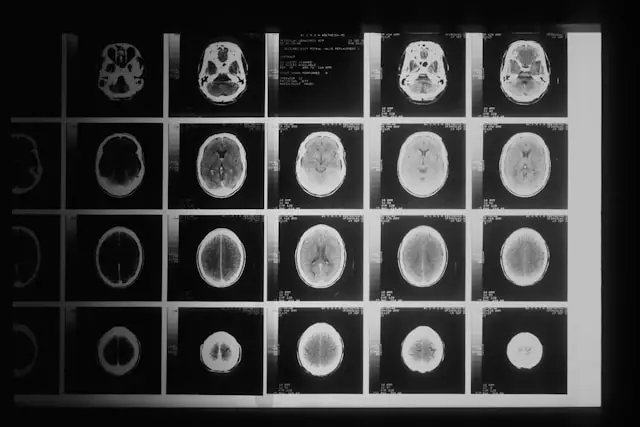Can Radon Cause Brain Tumors? The Latest Evidence for 2025
Radon is a naturally occurring radioactive gas that is well-known as a major cause of lung cancer, but there is growing public interest—and scientific debate—around whether it might also play a role in triggering brain tumors. In this in-depth article, we examine the current state of research, biological plausibility, types of brain tumors studied, and what this means for your health. All statements are supported by the most up-to-date, peer-reviewed studies and medical authorities.
What Is Radon and Why Is It a Health Concern?
Radon is a colorless, odorless gas produced from the breakdown of uranium in soil, rock, and water. It seeps into homes, especially in areas with granite-rich bedrock, and is the leading cause of lung cancer among non-smokers1. Radon exposure happens mainly through inhalation of contaminated indoor air.
How Does Radon Exposure Affect the Brain?
Biologically, ionizing radiation—including that from radon—is a known risk factor for several types of tumors because it can damage DNA in cells. There has long been an established link between ionizing radiation and cancers of the brain and central nervous system, especially in those receiving medical radiation therapy or exposed to atomic bomb fallout23. But does ordinary residential radon have a similar risk?
Recent Studies: The Evidence
1. Population-Based Studies
A 2022 study covering 83% of the U.S. population found that non-malignant brain tumors—especially meningiomas—had up to a 26% higher incidence in regions with both high radon and high particulate air pollution. However, this association was much weaker for malignant (cancerous) brain tumors, and disappeared after adjusting for socioeconomic and demographic confounding factors 14. Researchers concluded that while the results suggest a possible link for non-malignant brain tumors, more studies are needed to confirm causality.
2. Cohort Studies from Europe
A large Danish cohort followed over 57,000 individuals and found an almost doubled risk of primary brain tumors (both malignant and benign) per 100 Bq/m³ increase in average long-term residential radon 56. This exposure-response relationship was robust, but the authors caution that their results could be due to chance and require replication. Importantly, the effect was not influenced by outdoor air pollution.
3. Systematic Reviews and Meta-Analyses
Several systematic reviews, including a comprehensive one from 2024, show the evidence is mixed. Some occupational studies of miners exposed to high radon levels found positive associations with central nervous system tumors, while others did not 78. Meta-analyses estimate a modest (about 11%) increase in the risk for these tumors among those exposed to radon, but statistical significance varies across studies, and findings are sometimes contradictory 8.
4. Insights from Radiation Medicine
Moderate and high doses of ionizing radiation are a well-established risk for all brain and central nervous system tumors, with greatest risk for meningiomas (typically benign) and a dose-related effect 293. However, the risk from low-level, chronic radon exposure (as encountered in homes) remains under debate.
Mechanisms: Can Radon Gas Really Reach the Brain?
While most inhaled radon affects the lungs, there is some evidence that radon progeny—especially ultra-fine particles—can enter the brain via the olfactory neuronal pathway through the nose5. This direct route might expose sensitive tissues to ionizing radiation, although estimated doses to the brain from home radon are much lower than to the lungs. As a result, the biological plausibility of radon causing brain tumors exists, but the risk appears to be much less than for lung cancer.
What Are the Limitations and Unanswered Questions?
- Conflicting Evidence: Not all studies agree, and some meta-analyses fail to find a definitive link between radon and brain tumors 7108.
- Confounding Factors: Socioeconomic status, air pollution, genetic predispositions, age, and sex can all influence results.
- Type of Tumor: The associations are stronger for non-malignant tumors (like meningioma) than for malignant ones (like glioblastoma).
Practical Implications: Should You Be Worried?
- Radon is a major risk for lung cancer, not brain tumors. If you live in an area with high radon levels, testing your home remains crucial—for lung health above all.
- Do not panic about brain tumors. While some studies suggest a potential association between high radon and certain non-malignant brain tumors, the overall risk remains small compared to lung cancer risk.
- Protect children and vulnerable groups. Children may be more sensitive to all forms of ionizing radiation, though the risk from radon remains unproven for brain tumors at household levels 29.
References
- Residential radon exposure and brain cancer11
- Exposure to radon and heavy particulate pollution and incidence of brain tumors14
- Residential Radon and Brain Tumour Incidence in a Danish Cohort56
- Radon exposure and tumors of the central nervous system (systematic review)7
- Radon exposure and potential health effects other than lung cancer (meta-analysis)8
- Ionizing radiation and the risk of brain and central nervous system tumors (systematic review)2
- Computed tomography scan radiation and brain cancer incidence9
- Mayo Clinic: Brain tumor – Symptoms and causes3
Conclusion
To date, there is no definitive proof that ordinary residential radon exposure significantly increases brain tumor risk, though some newer epidemiological studies and mechanistic models suggest it could contribute—mainly for certain non-malignant tumors and in areas with high particulate pollution. The best-supported environmental risk from radon remains lung cancer, but it’s wise to test your home and mitigate high radon levels. Ongoing research may shed new light in the coming years, but current evidence points to an inconclusive but possible small risk for brain tumors, best addressed through radon mitigation for lung health.
If you’re concerned about radon, consult your local public health authority or a certified radon mitigation professional.
This article is based on the latest scientific reviews and large-scale epidemiological studies as of 2025, and will be updated as more evidence emerges.







